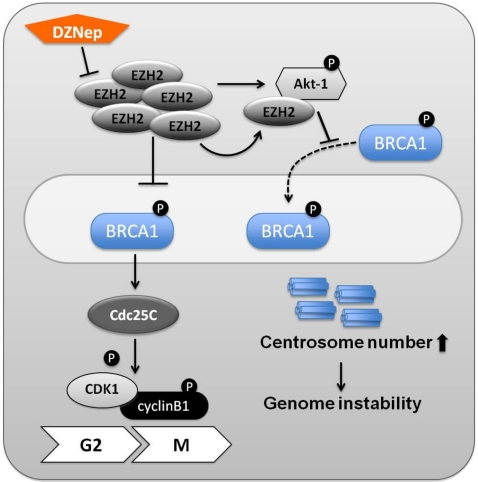Figure 3.
Molecular interplay between EZH2 and BRCA1 in basal like breast cancer. In ER-negative breast cancer cells, elevated EZH2 concentrations block the phosphorylation of BRCA1 (Ser1423). Once the tyrosine phosphatase Cdc25C is phosphorylated, it dephosphorylates the cyclinB-bound Cdc2 (CDK1) and thereby triggers entry into mitosis. Accumulation of Cdc2 and cyclinB1 results in increased cell proliferation. In addition to its canonical function as a H3K27 methyltransferase, EZH2 most likely also has non-canonical functions. EZH2 can phosphorylate Akt-1 (Ser473), but not Akt-2 and -3, and interact with Akt-1. It leads to reduced nuclear retention of BRCA1. In breast cancer cell lines this leads to increased centrosome numbers and genome instability. The EZH2 inhibitor DZNep is more effective on BRCA1-deficient cells, and can thus serve as one arm in a therapeutic regimen.

